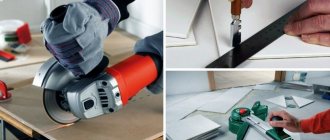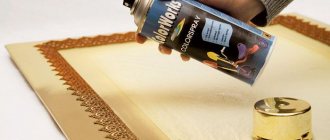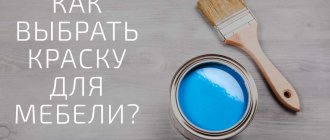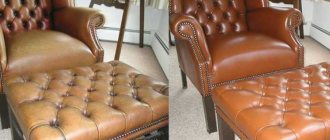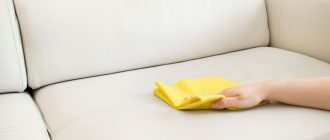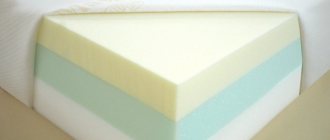- Home"
- DIY furniture restoration
Do-it-yourself furniture restoration is a difficult but interesting job that allows you to restore your favorite interior items. By spending a little time, you can make a comfortable, stylish wardrobe out of an old wardrobe, or make an addition to a designer table out of your grandmother’s chair. In order for the result to meet your expectations, you need to purchase the necessary materials and tools.
Features of self-restoration
Independent restoration of furniture is a complex, labor-intensive process that requires at least a little theoretical and practical knowledge. When working on outdated interior items, important points to consider:
- Furniture that is constantly in use needs to strengthen the frame. As a rule, the body of a cabinet, sofa or table becomes loose after 5-7 years of use, so restoration work must begin with strengthening the frame.
- You need to select tools and paints taking into account the material from which the base is made.
- If there are drawings on the object, then you need to work with them carefully, either choose the right shade of paint for painting, or use a thin brush to draw details.
- When restoring wooden furniture, the condition of the wood should be assessed. If it is severely rotten, then there is no point in restoring the item.
Before starting work, it is important to assess the general condition of the frame. In some cases, its restoration is impractical. You can replace the fittings and upholstery, repair the mechanism, but if the base is very dry, insects have eaten it, or rot has struck it, then it is better to abandon the restoration.
Kitchen furniture repair at home
The company's craftsmen repair all types of kitchen furniture at home:
- floor and wall cabinets;
- kitchen corners;
- tables;
- sofas of all configurations;
- chairs are soft and hard, with and without armrests;
- chairs with and without backs.
The company's carpenters provide the following services for repairing kitchen furniture at home:
- assessment of furniture condition;
- restoration of facades and surfaces;
- replacement of fittings and hinges;
- replacement of work surfaces and wall panels;
- replacing countertops;
- elimination of distortions in cabinet furniture;
- replacement of upholstery of upholstered furniture;
- repair or replacement of folding furniture mechanisms.
This list includes only those types of services that predominate in applications. The company's specialists will help you, even if your problem is not included in the list.
Advantages and disadvantages
Restoring old furniture is a creative process that allows you to restore beauty and functionality to interior items. A finished sofa, table or cabinet can be used independently, left as decoration or sold. Antique furniture is in great demand among collectors and lovers of retro styles, so there is always a demand for it.
Advantages of restoring furniture with your own hands at home:
- Savings on the purchase of a new item and the services of a restoration workshop. Much work can be done independently using available tools.
- After the work carried out, the furniture will last longer.
- You can discover your creative potential and realize complex ideas. You will not be rushed, which allows you to spend a lot of time on restoration.
- You don’t have to get rid of an antique item inherited from your ancestors. Perhaps the chest of drawers is treasured as a memory of your grandmother or evokes nostalgia for childhood. Many people find it difficult to part with old items left over from childhood.
- Old furniture will not spoil the new interior. This applies to items that were purchased to complement the interior, but then the design of the room changed. In this case, you need to create new furniture that will fit perfectly with the overall style.
You will get the wardrobe or sofa you need without tedious searching. At home, you will create an item that meets your requirements. And to do this, you don’t need to look for it in stores, order it on foreign websites, or have it manufactured by specialists.
But there are also disadvantages to restoring furniture yourself:
- Without any experience working with furniture, you may encounter difficulties already at the stage of selecting materials. It is important to choose a coating that will protect the surface from insects and minor damage.
- You need to be able to work carefully with small details so as not to spoil the original drawing.
- To restore furniture, you need a separate room, preferably not in an apartment. If this is not possible, construction covers are needed to protect the interior.
- During repairs there will be dust, dirt, noise and unpleasant odors. This is another reason to look for a separate room where your family members will not be.
Removing the polishing layer
If there is polishing that needs to be removed, you need to:
- Use a special liquid composition.
- Use paper towels or napkins;
- Work with a brush made of natural bristles;
- Use steel wool, coarse sandpaper and a spatula.
During the work itself, the binder composition is poured into a mug or into a container with a wide neck. Apply a thick layer to the surface with a brush containing the mixture. After some time it softens and is removed. Use a spatula to carefully scrape off the residue, always along the wood fibers.
The procedure is repeated until the entire surface is completely cleaned. In this case, additionally use steel wool and sandpaper. At such a moment, it is better to have rubber gloves on your hands, and to avoid inhaling harmful fumes and not clogging your respiratory tract with fine dust, wear a respirator.
Detected cracks are masked with soft wax, selected according to the shade, rubbing it into the surface. To smooth out chips and gaps, putty is used; after complete drying, the surface is sanded with sandpaper. The varnish is applied only after the entire structure has been carefully processed and primed.
If a beginner has to do the work, it is best to use visual aids on a specific topic. Carefully study all aspects, view photos of the restoration of old furniture.
Restoration methods
There are several restoration methods. They are selected depending on the type of item, material and complexity of damage. First, study the condition of the furniture, carefully inspect every detail. If you have small scratches on the wood, they can be easily removed with wax chalk, which you can buy at a hardware or furniture store. For deep scratches you will need putty.
Minor furniture flaws can be eliminated quite easily:
- If the facades have lost their shine and color, then a special product containing orange oil will help restore them to their original appearance. It needs to be rubbed in with a soft sponge, pre-moistened and heated. Remember safety - be sure to wear rubber gloves before starting work.
- Minor scuffs and stains can be easily removed with fresh banana peels. Wipe the stains and then use a dry, soft cloth to remove banana fibers.
- Whitish stains on the countertop can be removed with toothpaste. It should be applied to the stains, left for a couple of minutes, and then removed with a cloth.
- Minor scratches and abrasions can be removed with a construction marker. But here it is important to choose the right color so that the painted spots do not stand out on the facades of the furniture. To make the marker look natural on the wood, blend it with a sponge or finger after application.
- Iodine is another effective remedy for removing minor scratches. True, iodine can only disguise them.
The listed methods are suitable for repair if the furniture is not seriously damaged and does not require complete restoration.
Restoring a varnished surface with your own hands
Working with a varnished surface is difficult. It is difficult to restore and most often requires complete removal of the varnish. But there are still several ways to repair minor damage:
- Small scratches are masked with a construction marker or iodine.
- Deep scratches can be removed with a masking mixture consisting of 3 parts turpentine and 4 parts melted wax. The resulting mixture is applied to the damage and rubbed in with a cloth.
- To repair scratches on dark-colored surfaces, try shoe polish. Use it to fill the damage and leave to harden, then buff with a soft cloth.
- You can remove stains with gasoline, alcohol, a mixture of alcohol and drying oil.
To restore the surface's shine, rub it with a mixture consisting of 1 part vinegar, 2 parts turpentine and linseed oil. The composition is applied with a swab for 30 minutes.
Veneer restoration
Restoration of veneered furniture is carried out using construction putty intended for repairing wooden surfaces. It is used to fill cracks and chips, and then the surface is painted. If there is a relief pattern, it is created before the putty hardens.
Swollen areas are eliminated using PVA glue. They need to fill the resulting bubble by piercing it with a needle. Then the working surface is covered with fabric, and a load is placed on top.
It is more difficult to work with veneer that has several damages, such as swelling and cracks. In this case, the furniture is restored in three stages:
- The swelling is filled with PVA glue.
- The cracks are filled with putty.
- After the putty has dried, the cracks are painted over with a marker or paint.
How to restore chips on furniture
The choice of method and technology for surface restoration directly depends on the depth and nature of the damage. For example, in order to remove a scratch on white furniture, a specialized polishing compound is used, including titanium white, wax and drying oils. Only an experienced specialist can prepare a similar composition at home.
The resin is filled with fine wood dust
How to approach restoration correctly
First of all, you need to inspect the damaged area. If the furniture is matte or semi-matte, most often the repair process will be reduced to properly tinting the area where the chip occurred, applying a leveling compound and, after drying, leveling the surface with polishing felt.
Such a chip will require a complete replacement of the varnish
If, by misfortune, a chip appears on a polished surface, then the procedure for repairing furniture becomes somewhat more complicated:
- Firstly, it is necessary to properly trim and remove the remnants of the varnish layer and primer; the thickness of the gloss on a furniture surface can reach 1 mm. Therefore, if you simply tint the damaged areas, a clearly visible depression will still remain;
- Secondly, it is necessary to clean the edges of the chip and remove any remaining gypsum or adhesive impregnation. This is necessary so that after applying the repair composition the material does not peel off from the original varnish layer;
- Thirdly, the wooden surface will have to be re-equipped and thoroughly dried; the quality and durability of the repair depends on how firmly the polymer mass is held on the surface of the furniture.
The remaining operations to restore the damaged area are selected depending on what material and in what sequence the chip will be repaired.
How to repair a chip on chipboard furniture
Repairing a chipped area on a furniture panel made of chipboard is considered one of the simplest. Typically, such particle board is laminated or treated with a very hard melamine resin. Next, the surface is covered with paper or film with a fiber pattern applied, after which varnish is applied.
So for chipboard, the process of repairing a chip comes down to gluing the damaged area with a patch, tinting the joint line and polishing the surface with a viscose cloth and spray applied to restore shine.
How to repair scratches on wooden furniture
Restoring the surface of a furniture panel or part made from solid wood is carried out in three steps. First of all, a restorative mixture of resin or molten polymer is applied to the chip. It is clear that the area around the chip must first be sealed with paper tapes and a soap solution.
Resin can easily replace the mass lost on a chip
Using a sharp spatula, level the surface of the resin on the chip. After hardening, a veneer patch is glued on, then varnish is applied, and the surface is polished with a special wax-based abrasive paste. If everything is done correctly, the surface of the patch on the chip will be level with the main varnish surface of the furniture.
After restoration, the old varnish must be rubbed over the entire surface
Important! Upon completion of the work, the damage is polished, starting from the place of the chip and gradually increasing the area of the polished surface to the size of a furniture panel.
How to remove scratches from polished furniture
Of course, such complex and labor-intensive operations are performed only if the depth and size of the chip are too large to be treated with simple cosmetic procedures.
If the size of the damage is very small, no more than 10 mm, then you can try to mask the scratches on the furniture with a walnut. To do this, use the freshest green nut, which must be peeled and the kernel removed. The raw product contains a fairly large amount of juice, which perfectly masks any light scratches, cracks, or places where the varnish has peeled off.
An easy way to hide a chip on walnut furniture
A good addition to such repairs would be treatment with polishing paste. If the scratch is on a glossy surface, it is better to use a special alkaline paste. A similar product for removing scratches on furniture dissolves part of the varnish and, with prolonged but not too intense polishing, softens and tightens the edges of the scratch.
This method is absolutely not suitable for light furniture. Any attempt to polish a chip or scratch always leaves a dark matte stain, which is clearly visible on the white or coffee-colored surface of the furniture.
In this case, you can remove scratches on white furniture using special varnish toners. Essentially, this is a pencil, a print corrector, inside of which there is a liquid polymer, which must be carefully squeezed onto the surface of the crack, dried and processed in accordance with the instructions.
To repair scratches on beige or coffee-colored furniture, you can use wax polishes used by professional furniture makers and cabinetmakers. The material is melted in a water bath, laid out in a cotton napkin, rolled up into a knot and used to finalize the area of a chip or scratch.
Important! Under no circumstances should vegetable or animal fats be used to remove scratches and chips on the surface of furniture. You can try to restore a crack or scratch using drying oil paints, but this requires very good knowledge of technology and the ability to handle this kind of material.
How to remove scratches from leather furniture
The main difficulty in working with leather-lined furniture is that for restoration you cannot use traditional materials and methods used for wood, chipboard and MDF panels. It is possible to restore the surface, remove scratches and repair chips only with the help of special lanolin creams and dyes.
If you don’t have a specialized composition on hand, you can use paint cream to restore the surface of leather jackets and even shoes. You just need to choose the right color. Many foreign, for example, German, manufacturers of leather and furniture care products describe in detail in the instructions exactly how and in what sequence a scratch or chip can be repaired.
Folk remedies usually use food grade glycerin or petroleum jelly. Both products soften the surface well, so after treatment, the damaged area on leather upholstery will need to be additionally polished with a dry cotton cloth.
How to remove scratches on MDF furniture
To repair and restore chips and deep scratches on MDF panels, we recommend specialized wax pencils. Typically, such material is sold in sets of several dozen pieces. One standard set can contain more than 40 shades and colors for the most commonly used furniture textures.
Wax allows you to repair a chip in minutes
The wax pencil is heated with a burner and applied directly to the chip site. Once the patch material has cooled, trim off the excess using a sharp blade. If the damaged area is on the front surface of the furniture, then the patch on the chip must be additionally polished using an electric vibration machine and felt.
Veneering/veneering
Veneering is one of the ways to restore interior items. By covering the tabletop with veneer, you will transform it beyond recognition and give it a rich look. Thanks to the huge number of colors and textures, it is possible to choose the material that will fit perfectly into the overall interior.
There are three veneering methods:
- Hot. The material is glued to the base with glue.
- Cold. The material is pressed using special equipment.
- Membrane. Used in industrial environments and suitable for difficult surfaces.
At home, you can only use the first method. It is implemented in several steps:
- Removing old coating, fittings, eliminating damage using putty. After filling the cracks, the putty is leveled with sandpaper until a completely flat surface is obtained.
- Veneer preparation - unwinding the roll, moistening with a sponge. In order for the material to become straight, it must be laid wet between the boards and left to dry.
Glue is applied to the prepared surface, then the veneer is glued. The top is ironed through paper.
Varnishing and polishing
In case of complex damage to the varnished surface, the old coating is removed, then the surface is thoroughly cleaned. Next, varnish is applied to the furniture in several layers. The work is completed with finishing using polishing paste. For convenience, you can use a grinding machine. This restoration method is suitable for self-implementation, provided that you have the necessary tools.
How to hide deep cracks
Very noticeable damage to furniture cannot be easily hidden with improvised means. To restore the original appearance and restoration requires a comprehensive approach to solving the problem.
See also
How to properly decorate a balcony with decorative plaster with your own hands
Preparing the site
Before starting work, you need to thoroughly clean the surface of the furniture from dust and dirt. The cleaned area is coated with a degreasing agent and allowed to dry. Also at the preparation stage, you need to decide what material will be used to hide defects.
Applying the material
The purchased material is applied with a suitable tool or cotton pad to the damaged area. When applying, try to ensure uniformity. Excess material is carefully removed with a spatula.
Grouting the surface
After treating the scratched areas, you need to wipe the surface. During this procedure, the furniture coating becomes smoother and more even. As a rule, fine-grained sandpaper is used for grouting.
Painting
A layer of paint is applied on top of the applied masking material, which matches the color of the rest of the furniture. Paint not only visually hides defects, but also provides additional protection against new damage.
Decoupage
Even children will enjoy restoring furniture using decoupage. This is a fairly simple way to transform old interior items, make them bright and stylish. Decoupage involves gluing stickers and designs to a surface using glue.
As the main material, you can use any printed drawings, newspaper clippings, and even napkins. They cover cracks and scratches, and the material is varnished on top. The result is an original design with a beautiful shine.
Decoration
To decorate furniture, you need to decide on the theme in advance. This solution has many advantages: saving money, creating an individual style, and choosing your own design.
To have an idea of the possibilities of decoration, let’s understand the techniques and consider design ideas:
- A stencil is an excellent option for a children's room - decorating furniture with stencils of butterflies and animals. The idea is very simple to implement and does not require any skill. All you need is to purchase or make a stencil yourself. To achieve a beautiful effect, it is better to use contrasting colors;
- Decoupage - a technique that involves gluing the top layer of a napkin onto a prepared surface. If the chosen plot is made in light colors, it is necessary to paint the furniture white in advance;
- Craquelure - you can reconstruct furniture by giving it an aged effect. For this, craquelure varnish is used, which is applied in 2 approaches after painting the products;
- Mosaic is considered a complex decoration option, but the result will delight everyone. Glass tiles are used for mosaics;
- Appliques or stickers are an affordable and simple decoration method. Such products can be used to seal defects that cannot be restored;
- Painting – after applying the first layer of paint, the furniture is painted to taste. These can be ornaments, landscapes, silhouettes - it all depends on your imagination.
Old furniture restored with your own hands gets a new life. Such a product will serve in the house for a long time, delighting family members with its beautiful appearance.
Stickers
Craquelure
Stencil
Decoupage
Mosaic
What materials and tools are needed?
To restore aesthetics to furniture in a home environment, you will need materials and tools for the job:
- paint brushes;
- sandpaper;
- paint and varnish;
- masking tape;
- Grinder;
- PVA glue;
- drawings for decoupage;
- construction stapler;
- disinfectant (alcohol, nail polish remover, acetone);
- fabric (for changing the upholstery of a sofa or chair).
Additional tools and materials may be required during the work process.
Stages of complete restoration
If you decide to completely renovate a piece of furniture, then there is a lot of work to do. It takes place in several stages:
- Disassembly. Fittings and upholstery are removed if they require replacement. Keep in mind that antique items have good fastening materials, which can be damaged. If you are remodeling a chair, but the upholstery is intact, then there is a reason to keep it.
- Removing paintwork. The varnish is removed with a grinding machine or sandpaper. Cracked coating can be easily removed with solvents. You can also remove the paint with sandpaper or preheat it with a hair dryer, and then clean off the softened material with a spatula.
- Removing damage. We wrote above about ways to eliminate scratches, stains and cracks; use them to restore the integrity of the surface.
- Preparation for surface painting. Before applying paint, prepare the area. Remove dirt, dust, debris. Then degrease the surfaces to be treated. For better adhesion, apply a primer.
- Applying paint. The paint is applied with a brush or spray gun. To obtain a bright shade, apply 2-3 layers of paint.
- Applying varnish. To get a shiny surface, apply varnish to the dry paint.
- Upholstery. The fabric is attached to the frame with a construction stapler or small nails.
- Assembly. The final stage is the assembly of the structure and installation of fittings.
Restoring furniture completely with your own hands is interesting, but quite troublesome. If you are not ready to spend several days remodeling home furnishings, turn to the professionals.
The Klebor workshop repairs modern, vintage and antique interior items, restoring their functionality and aesthetic appeal. We restore by hand and using professional equipment. Before ordering, please read the price list and examples of work.
Work examples
Extensive experience in repair and restoration work allows us to work even with furniture in poor condition and skillfully restore lost fragments. The specialists of our workshop are able to completely restore the damaged surface, restore the relief and all decorative elements.
You can find out the most detailed information about how the workshop works, what and how we repair, as well as order repair of chips on furniture by calling us at +7(985)768-79-76.

